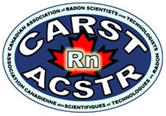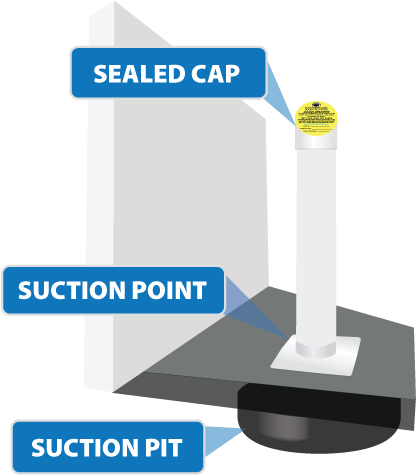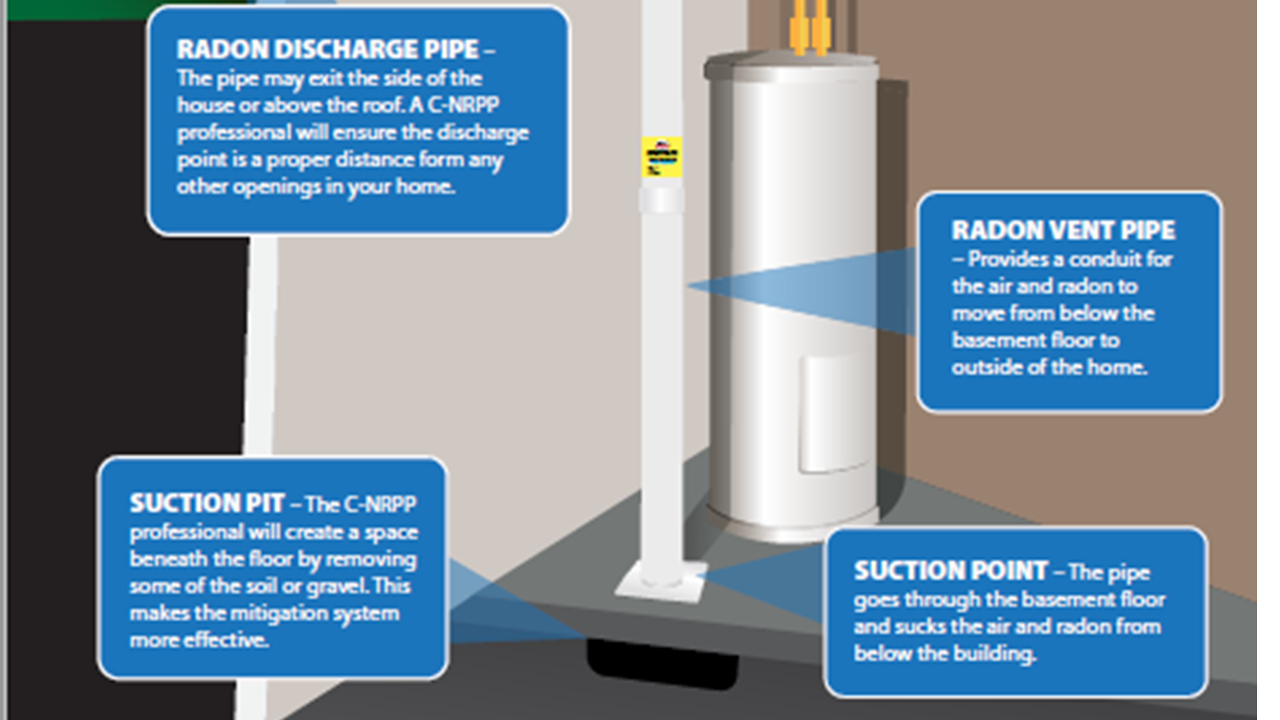 Canadian Association of Radon Scientists and Technologists Helping Canadians Reduce Radon Risk |
Are you a builder, looking for best practices for installing radon control measures in new construction?
No areas of Canada are radon free. The level of radon in a newly constructed home cannot be predicted; therefore all homeowners need to test their homes for radon by conducting a long-term test during the first heating season after completion of the home. We also know that in the first three years of construction, concrete cures and the building envelope in a home can change significantly, and so we recommend that new homes should be tested for radon again during the heating season at three years after construction. C-NRPP has a technical bulletin to help. Download it here. |
|
The Canadian radon guideline is set at 200 Bq/m3 for indoor radon concentrations at which mitigation is recommended. |
Check out this FREE WEBINAR:
Webinar on New Construction and Radon: for Building Officials
RECORDED: Wednesday, November 13, 2024
Check out upcoming courses here.
The National Building Code and many provincial and territorial codes address the need to mitigate potentially high radon levels by requiring a rough-in for future radon reduction in all new homes.
In general, the current NBC includes the following measures with respect to radon reduction (but not limited to):
- Granular drainage layer
- Sealed sub slab membrane
- All cracks/joints sealed
- Rough in pipe (ends within the interior of the home and is capped and sealed)
- Sealed sump pit
- Perimeter seal - the building code includes measures to includes good sealing, however with respect to the floor to wall joint; good perimeter sealing is quite important with respect to prevention of radon entering a home; due to the nature of concrete shrinkage it is important that this sealing measures are done in such a way to accommodate for this eventual increase to the gap
- Location of the rough-in - pipes must be installed in a useable location, it’s important to consider the future install of the full mitigation system (if required) and ensure the location is accessible for the eventual pipe to exit the building in a location with respect to all discharge clearances; allow installation of a fan (14” diameter or 7” radius); and ideally allow for a system with fewest amount of bends in the pipe to ensure an efficient system
- Properly capped and sealed rough-in with clear labelling - the rough-in pipe is a direct conduit from the ground into the home for the purpose of eventually extending it outside the building therefore having a sealed cap is extremely important, in addition, it must be properly labeled to ensure the current and future occupants know the purpose of the pipe; C-NRPP labels for radon control systems here.
- Piping below the slab: The building code requires the rough-in pipe to extend below the slab towards the middle of the sub-slab space and so it is connected to piping which allows this to occur; ideally best practices would be such to ensure that this pipe is perforated and collects gas from the sub slab space for the full length of this pipe and that it would be installed in such a way that prevents the end of the pipe being plugged either from gravel or concrete, and in addition, that it would be installed to provide a collection system from both sides of sub slab barriers such as strip footings
- The type of pipe used for the rough-in stub pipe must be appropriate for above ground use; PVC pipes installed completely or in part above grade shall comply with Schedule 40 specifications regarding wall thickness, inside and outside diameters and pressure ratings.
In January 2020 (updated August 2024), CGSB released a standard to provide technical recommendations for radon control measures in new low-rise residential buildings. The standard outlines best practice knowledge to date of radon mitigation techniques, materials, products and installation and is intended for use by contractors or management teams with at least one individual on site who is specifically trained in the technology of radon reduction.
Download the CGSB Standard for New Residential Construction here.
Organizations such as the Canadian National Radon Proficiency Program (C-NRPP) can provide information on radon mitigation training for new construction.
The three levels of protection from radon ingress are the following:
Level 1 = rough-in for active soil depressurization;
Level 2 = full passive vertical radon stack (level 1 plus a stack);
Level 3 = full active soil depressurization system (level 2 plus a fan).*
* We recommend that any Level 3 system should be installed by a C-NRPP professional to ensure the fan is properly sized and post-installation testing is completed correctly.
While most provinces and territories already require protection from radon similar to level 1 in all new homes, level 2 and level 3 requirements in this national standard are intended for higher risk areas. In areas where significant proportions of homes are likely to test above the 200 Bq/m3 Canadian radon guideline, authorities may find it prudent to adopt either a level 2 or level 3 protection requirement in new construction.
An approximately 50% reduction in radon levels offered by a properly implemented level 2 (full passive vertical radon stack) system will result in a significant reduction in radon exposure and radon-induced lung cancer risk whether or not the home is tested. A radon reduction of approximately 90% or more (in the case of high radon levels) can be obtained by installing a properly implemented level 3 (full active (fan driven)) radon mitigation system.
Purchase proper labels for radon control systems here.
Level 1 facilitates the future addition of a full passive or active system if the home tests high after occupancy.
| Level 2 is a full passive radon reduction system which uses a stack which runs vertically up through the building envelope and exhausts above the roofline. The system intermittently reduces indoor radon levels due to the stack effect and does not require electrical power. A Level 2 system will typically reduce radon levels by 50%.
| Level 3, a full active soil depressurization system, is the most effective radon reduction system, often reducing high radon levels in a home by 90% or more, but requires a fan to be operating continuously.
|



